#agriculturenewstoday
Explore tagged Tumblr posts
Text
#agriculture#agriculturenews#farming#farmer#farminglife#india#tomato farming#tomatoes#kisan#krishi app#krishivikas#agriculturenewstoday#क्रषि समाधन#Kisan app#krishi App#indian kisan app#कृषि समाधान#agri#agro
0 notes
Text
#agriculture#farming#farmer#agriculturenewstoday#india#crop#agriculturenewsnetwork#krishi#kisan#Weat#agritech#krishivikas
0 notes
Text
#agriculture#agriculturenews#farming#farmer#farminglife#agriculturenewstoday#agriculturenewsnetwork#onion#farmerslife#farmingapp#krishi app#kisan#newsupdate
0 notes
Text
Government Imposes 20% Tax on Parboiled Rice for an Uncertain Period.
The government of India has decided to add an extra 20% export tax on parboiled rice exports from the 31st of March onwards. India, the biggest exporter of parboiled rice globally, might continue charging a tax on this type of rice to help control food prices before the Lok Sabha elections. This could make it harder for other countries to get enough rice and could make prices go even higher.
Krishi Kisan app
Prime Minister Narendra Modi, who wants to be elected for a third time in the upcoming elections, is thinking about keeping the tax on exports at 20%. They're not planning to stop exporting parboiled rice altogether.

Earlier in August 2023, the government had imposed a 20% export tax on the same. The tax was supposed to end on March 31st, but now they might extend it. With the latest order increased export tax will resume without an end date. This move is made to hold on to enough local stock for the hassle-free supply of domestic usage.
Krishi Yantra
Apart from the tax on rice export, the tax-free import of yellow peas has also been sanctioned. Moreover, it is extended past 31st March. The order is subject to the condition that the bill of landing should be on or before 30th April 2024.
It is positive to see India's retail inflation easing to 5.10 per cent annually, especially after reaching a four-month high of 5.69 per cent in December. Data from the Ministry of Statistics and Programme Implementation has revealed so. In the past month, all kinds of rice saw a 10% decrease rate within the surging supply in the market. With the help of government policies, the staple food grain was made more accessible for the Indian Households.
The government has put a tax on exporting all types of non-basmati rice until October 16, 2023. They've also limited the export of non-basmati white rice. About a quarter of all rice exported from India is this type. Last year, India made around $4.8 billion selling basmati rice, about 45.6 lakh tonnes of it, to be precise.
The Finance Minister said in her budget speech that the government's actions have helped control rising prices, especially for things that have short shelf life. From April to December last year, the prices of regular commodities went up less than before. Now, the prices are steady and not going up too fast.
youtube
#agriculture#agriculturenews#farmer#farminglife#india#agriculturenewsnetwork#newstoday#agriculturenewstoday#Youtube
0 notes
Text
Farmers’ Protests: Understanding the Swaminathan Committee's recommendations for farmers
The country faces an upside-down situation with the recent farmer's protests. This has been going on for days regarding different issues. One of the needs that has been constant since 2010 is the execution of the Swaminathan Committee's report.
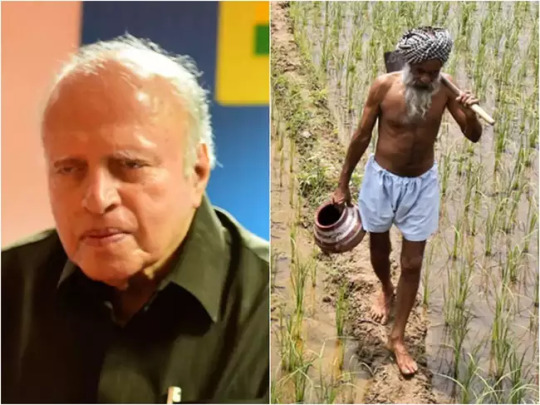
From Punjab to Tamil Nadu, Maharashtra to Madhya Pradesh, farmers have been asking for these recommendations to be put into action.
Krishi Gtyan
In the capital city, there is a heavy presence of protesting farmers calling for guarantees on Minimum Support Price (MSP), the enactment of the Swaminathan Committee report, changes to the Electricity Amendment Bill, and debt relief.
Krishi Vyapari
The BJP-led central government explains they need to take their time to consult everyone before making a law to ensure MSP for crops. Meanwhile, Rahul Gandhi, from the Congress party, reassures farmers that if his party wins, they'll ensure every farmer gets legal protection for MSP, following the Swaminathan Commission's recommendations. In 2019, after withdrawing the controversial farm laws, the Narendra Modi government acknowledged 200 out of 201 proposals from the Swaminathan Commission, including the MSP demand.
What is the Swaminathan Commission all about?
The late Mr MS Swaminathan, a well-known agricultural expert and recipient of the Bharat Ratna award, chaired the National Commission on Farmers. This commission issued a total of five reports between December 2004 and 2006.
The then government in 2007 sanctioned the National Policy of Farmers, based on the draft.
The plan involved improving things like land and other resources and providing farmers with good seeds timely. It also included giving them enough money from banks and confirming farmers come under the national safety plan. The commission ensured fair pricing of crops, among other things.
More insights of the commission's report:
Farmers protesting wanted a promise that crop prices would be fair, following the Swaminathan Commission's idea of the 'C2+50% formula.' This means the government should set prices at least 50% higher than what it costs farmers to grow crops. It includes things like the cost of land and capital ensuring that farmers get enough money. They also wanted the three farm laws cancelled: about trading crops, agreements on prices, and about controlling essential goods.
The panel found that problems like lack of land reforms, water issues, and farmers feeling exhausted by outdated technology were causing them to take their lives. Miserable weather conditions also made things worse. The panel wanted farming to be under both state and central government control to help. They also said corporates shouldn't take over farmland for things other than farming. They suggested rules for selling farmland too.
The commission said farmers should have fair and steady access to water for their fields. They also suggested investing more money seeing that there's enough water for farming, but this plan isn't used anymore.
To increase the productivity of Indian agriculture a group suggested putting more money into things like farm buildings and roads. They also said farmers should take better care of the land by not disturbing it too much. The practice helps the soil stay healthy.
They also talked about giving farmers easier ways to borrow money. They said the government should help make loans cheaper. They thought about Kisan Credit Cards for lady farmers so they could get loans too.
The group suggested making a special fund to help make insurance better for people living in the countryside. This fund would help pay for things to make insurance easier for them.
youtube
#agriculturenews#agriculture#farmer#farminglife#agriculturenewstoday#india#youtube#farming#crop#farmingnews#Youtube
0 notes
Text
The wholesale TUR prices experienced an upward shift of 5 percent in one month.
Wholesale prices of tur dal have risen 5% in the past one month despite new crops percolating and continued imports from Myanmar owing to reduced acreage coupled with production falling for second successive year thereby putting pressure on supply, potentates noted after convening.

The freight on board prices of tur/arhar which had peaked at ₹200 per kg in Indian rupee terms, during the month of December showed a decline between five to ten percent as control measures for pricing were initiated through opening import window with yellow peas to price controlling mechanism by government monitoring stock limit issue and subsidised Bharat chana.
On the other hand, this also brought about major decrease in prices of entire raw unprocessed variety of tur beans during a period when harvesting kharif crop was just initiated and that farmers refused to sell their harvests and cut short supply penetration toward customers according to industry specialists. With the prices falling to their lowest levels there were indications that tur was in short supply, thus far farmers started waiting for rebound of its price,” said Latur based dal miller Nitin Kalantry. The tur prices, that have slowed down in the middle of August when it slipped as low as to ₹85/kg from its high-flying figure at around Rs.120 pe kg also appears again on an upward trending path now.(How To Promote Clean Diet With Cement Inc Biodegradable Solutions)
The industry body Indian Pulses and Grains Association (IPGA) notes that tur prices have increased for four consecutive weeks as import purchases steadily rev up owing to heightened purchase of the wholecurs by dal millers aimed at processing into dals.
India has been fulfilling its domestic needs of tur dal stocks using imports both from Myanmar and African countries since the super cyclone disaster. It is becoming so more complex that the supplies from Africa are experiencing a siege blockade by their local government while those of Myanmar which have also lower than expected, this too has echoed among industry insiders.
#agriculture#agriculturenews#farmer#farming#farminglife#agriculturenewsnetwork#crop#india#agriculturenewstoday
0 notes
Text
Horticulture production in 2022-23 is estimated to be 2.32% higher: Third Advance Estimate
The total horticulture production in the year 2022-23 is projected to be 2.32% up over the previous year due to higher output of fruits and vegetables, as per the Third Advance Estimate of 2021-22
Kisan App However, though the production of vegetables is estimated to be 213.88 million tonnes in 2022-23, more than 209.14 million tonnes last year due to an increase in potato and tomato ,There is no data on onion output.
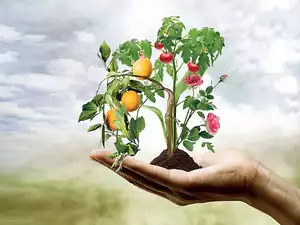
Krishi App In some of the major producing regions in Maharashtra and Karnataka, rabi (winter) onion sowing has declined by 20% till the first week of January due to erratic rainfall patter – lower reservoir levels hampering irrigation activities. The production of potatoes is forecasted to be 60.22 million tonnes, and in the year 2021-22, the production was estimated at 56.18 million tonnes. The tomato production is forecast to be 20.37 million tonnes in the year 2022-23 as compared to 20.69 million tonnes in the fiscal year of 201-15. It is estimated that production of fruits will increase from 107.51 million tonnes in the year ending 2021-22 to 109.53 million tonnes in the year ending 2022-23. The horticulture production in the year 2022-23 is projected to stand at a figure of 355.25 million tonnes which is roughly about 8.07 million tonnes more than what was reported during the year 2021- The acreage under horticulture crops is projected to rise slightly from last year’s 28.04 million hectares, to 28.34 million hectares
youtube
#agriculture#agriculturenews#farmer#farminglife#agriculturenewsnetwork#india#crop#agriculturenewstoday#youtube#Youtube
0 notes
Text
India has no plans to import wheat for now: Piyush Goyal

India is not going to import wheat and its farmers are expected to reap a record crop to create a surplus of wheat stocks in the world’s second-largest producer of this grain, the trade minister said on Saturday. According to ground reports, the crop is quite good this year and the output is likely to reach a record of 114 million metric tons, Piyush Goyal said in a briefing to reporters.
Kisan App Last year, India outlawed wheat exports only to revive them in recent months following Moscow’s invasion of Ukraine that caused an increase in global prices.
Krishi App The government has offloaded an estimated 6 million metric tons of wheat to local bulk buyers since June. 1, After the Food Corporation of India began selling the grain out of its warehouses. Even at the cost of selling wheat from its granaries for April 1, when the new marketing year starts, inventories are likely to be above the target of 7.46 million metric tons at state warehouses as well as declared by the government official earlier this month. The level of wheat stocks in state warehouses amounted to 16.47 million metric tons as of January 1, the lowest since 2017. However, Goyal announced that for the present period, India will maintain its export restrictions on wheat, rice and sugar. He said, “We will work to safeguard the interests of consumers and farmers.” India, which is also the second-largest rice producer in the world, banned exports of non-basmati white rice abroad last year. Thus, New Delhi has also stopped mills from exporting sugar in 2013. Goyal also told that his government has no immediate plans to allow duty-free imports of corn – also known as maize in India – rejecting the requirement of the poultry industry.
#agriculture#agriculturenews#farmer#farminglife#agriculturenewsnetwork#india#crop#agriculturenewstoday
0 notes
Text
Nafed feels the pulse, gets pvt retailers to sell subsidised grains.
For the first time, foodgrain in consumer packs had been made available to consumers through the private retail channels subsidised by the government. The pilot of selling subsidised pulses under the Bharat Dal brand through Reliance Retail and Big Basket was started by the government agency Nafed. This was revealed by Nafed officials who refused to be named, “We have plans to soon start selling Bharat Atta through the private retail channels”.
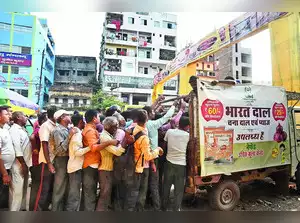
Kisan App Since end-October, Reliance has began selling Bharat Dal and its response has been getting better and better. As per industry sources , Bharat Dal sells at about 50% of the chana dal sales at some of the Reliance stores. The email sent by ET remained unanswered by Reliance.
Krishi App The supply of Bharat chana dal is more in north and west India from where Nafed picks the Bharat dal processed. Sources said to ET that the quality of Bharat dal and the private label dal is more or less the same because both get chana from Nafed, the only agency in India which has stocks of chana. Bharat chana dal is less expensive than the low priced dal sold by these retailers by over 40%.
#agriculture#agriculturenews#farmer#farminglife#india#crop#farming#agriculturenewstoday#newsupdate#newstoday
0 notes
Text
Main producing regions record a reduction of 10-15% in Rabi onion sowing
The sowing of the rabi onions has dropped by 20% to 25% until the 1 st week of January in some of the main producing regions located in Maharashtra and Karnataka.
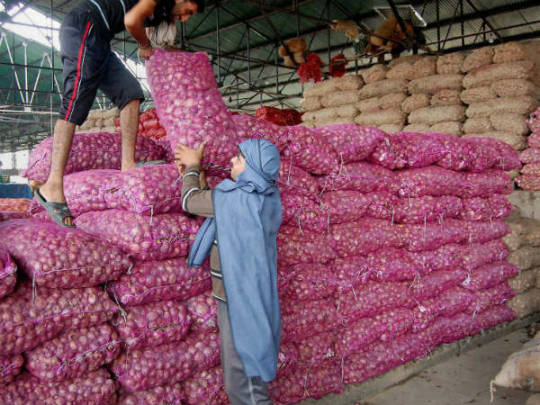
Kisan App Industry experts opined that although there are a few days remaining before sowing window finally shut, it may possibly drop by 10-15% the acres of onion this season. Some of them said this could lead food inflation to much higher levels around March-April just before the Lok Sabha polls when the government will be under pressure to avoid inflation.
Krishi App They may partially recover the present levels of planting, but in the end of the season, the area under cultivation of rabi onion may shrink by 10 percent, according to Pushan Sharma, director research at Crisil Market Intelligence and Analytics. 0.6 percentage points out of total inflation and 10 out of the basket of vegetables belong to onions. 70% of total onions produced in the country is in the rabi season. This season’s onions have a longer shelf life of about 5-7 months and have the greater responsibility of ensuring a supply-demand balance in addition to feeding the population from March to September. 2 Major states of onion creation, Maharashtra and Karnataka both have insanely low reservoir levels, which have undermined irrigation perspectives leading them to shift away from rabi onion which demands approximately 12-15 irrigations, states the Indian Council of Agricultural Research (ICAR).
youtube
#agriculture#farming#agriculturenews#agriculturenewstoday#india#farmer#indianfarmers#newslive#Youtube
0 notes
Text
Going bananas: By October, prices rise to ₹30/kg from ₹18-20.
Banana prices gone bananas after being hit by falling cultivation in major producing and disease in such areas.

Krishi App According to consumer inflation data revealed last month, banana inflation rose to 16.5% in November up from 2.2% four months ago. Traders noted that retail prices are standing somewhere between ₹30 per kg now from ₹18-20 in October. Banana Growers Association president BV Patil The unsuitable weather conditions this year caused multiple disease attacks on production. Kisan App
Experts believe that banana prices are likely to appreciate further. Trader added, the modal price – the most common price at which a product is sold in a market – of bananas in Azadpur Mandi of Delhi, one of the largest fruit and vegetable markets, on January 6 was ₹2,900 per quintal against ₹1,800 per quintal in October Experts note that it could also overthrow inflation mathematics. Paras Jasrai, senior analyst, Ind-Ra said, “Fruits inflation was about 11% in November Supply side pressures could sustain high inflation on fruits in the short term. 35.36 MT of bananas per year is produced in India, and only 1% is exported to other countries in FY23. Traders and growers warned that in some areas production has suffered 15-30% because of rainfall at the wrong time of the year and disease outbreaks, with prices being effected. A trader and exporter of fruits along with bananas, Bhavesh Karara said, “Production of bananas this year has been hampered by unpredictable weather conditions and prevailing diseases in the major states that produce these fruits”. The cucumber mosaic virus has been one of the factors affecting several banana-growing districts in Maharashtra, one of which is Jalgaon. The situation has been further emphasised by unseasonal rains that occurred in September. In Bihar, another major producer of the fruit, farmers have diversified from bananas to maize as well since the demand for poultry feed and ethanol has escalated, thereby making the production of maize economical to them. Further research indicates that banana exports have increased almost threefold in the past four years alone. These Middle Eastern countries have been the biggest buyers of Indian bananas representing over three-fourths of the total trade. However, exports are also finding new markets.
0 notes
Text
Indian agricultural exports to boom despite restrictions on wheat, rice, sugar.
To diversify the shipments, India’s trade minister said on Monday that the country’s agricultural exports will jump in fiscal 2023/24 despite restrictions imposed on wheat, rice and sugar despite that.
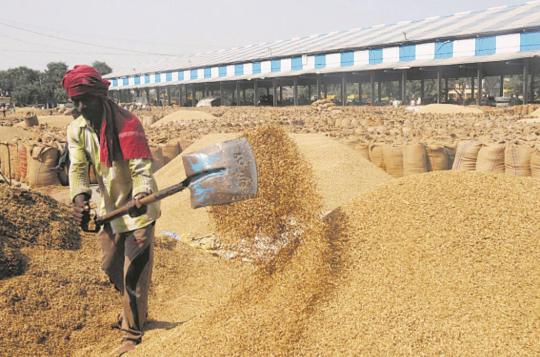
India, the world’s second largest producer of wheat, rice and sugar, imposed a ban on exports of these commodities last year in an attempt to minimize soaring domestic prices. kisan App These restrictions may lead to the shortage of $4 billion to $5 billion this year as Reuters reported last month.
krishi App Trade minister Piyush Goyal said in his address to a conference in New Delhi, “We had agri exports in the aggregate of about $53 billion in 2022/23, and we expect the number to increase in the current year despite the restrictions placed on the export of rice, wheat or sugar. State-run trade body APEDA data revealed that exports of meat and dairy, cereal preparations, and fruits and vegetables increased between April and November this year.
#agriculture#farming#agriculturenews#farminglife#farmer#crop#agriculturenewstoday#india#agriculturenewsnetwork
0 notes
Text
India's wheat production might reach a new high of 114 million tonnes in the year 2023-24.
The food ministry official said that wheat production is predicted to reach a new high of 114 million tonnes during the current 2023-24 crop year. This is because more land is being used for growing wheat and as long as the weather stays normal, it looks very promising. The last part of planting wheat, the main winter crop, is happening right now and will go on for another week. Until a week ago, wheat was grown in 320.54 million hectares, according to the information given.
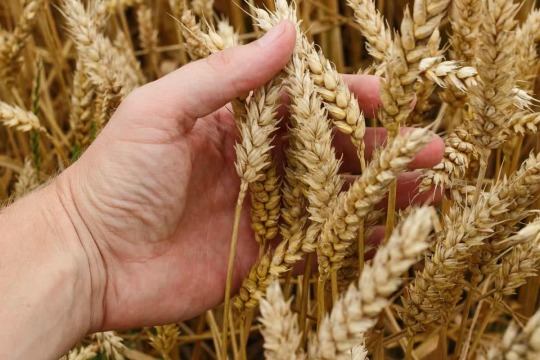
In the 2022-23 crop year (July-June), wheat production reached 110.55 million tonnes. This is more than the 107.7 million tonnes produced in the year before. Kisan App The person in charge at Food Corporation of India (FCI) said they think there will be more land used for growing wheat this year. If the weather is good, there could be 114 million tonnes of production. This information was given informally by the agriculture ministry.
Krishi App
The amount of land used for wheat farming has also gone up compared to last year. Some states had a one percent shortage, but that will also be fixed in the first week of January, he said. "If we make that much product, we're certain we can get more than we need and extra supplies for next year's Open Market Sale Scheme (OMSS)." He emphasized this. When asked if the central nodal agency plans to step up procurement considering the opening wheat balance of 76 lakh tonnes to be on April 1, which is just enough to meet the buffer requirement, the FCI chief said: We'll put in a lot of effort to provide cheaper costs and assist all farmers. The open market sale shows that prices are not going up more than last year and they are staying steady. "Since the cost of wheat MSP is 7% higher than last year, we hope many farmers will want to give their harvest to FCI." Meena said.
Last year, FCI bought 26.2 million tonnes of wheat. This was more than the yearly need of 18.4 million tonnes. This year's wheat harvest will start in April. FCI is the main center that buys rice and wheat to make sure farmers get MSP. It then gives it out for free to 81 crore poor people through ration shops. It also uses extra grain via OMSS to increase how much food is available and control costs.
#agriculture#farming#farmer#agriculturenews#india#agriculturenewsnetwork#agriculturenewstoday#wheat#farminglife#crop
0 notes
Text
India tells US about sending 8,606 tons of raw cane sugar. This is under the TRQ rules.
On Wednesday, the government said they are sending 8,606 tons of raw sugar to the US as part of the TRQ (tariff-rate quota) plan for the money year 2024. Shipments under the TRQ pay less customs fees. When the limit is hit, more costly tax is used on extra imports.
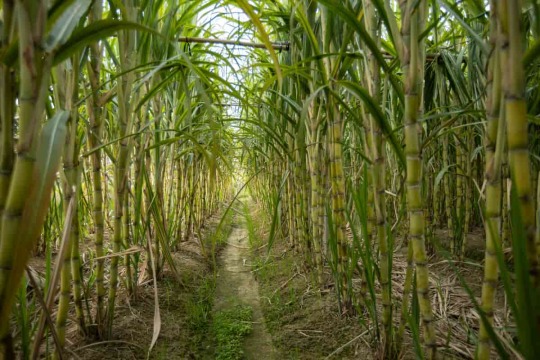
The DGFT announced that 8,606 MTRV of raw cane sugar will be sent to the USA under the TRQ plan from October 1, 2023 to September 30, 2024.
Kisan App
India, the world's second-biggest maker and biggest user of sugar, also has a special agreement for sugar export with the European Union. The DGFT said that the quota will be handled by the Agriculture and Processed Food Products Export Development Authority (APEDA).
Krishi App
In July 2023, the United States Trade Representative (USTR) declared how much sugar can be imported from India and other countries. This was first come, first served for the fiscal year 2024 (October 1, 2023 to September 30, 2024). This covered raw cane sugar, refined sugar TRQs let countries send a certain amount of a product to US with a lower tax rate. But, if they send more than a fixed limit, they have to pay a higher tax rate for all imports of that product
0 notes
Text
Mixed year for jute, government gave help to make industry strong again.
In 2023, the jute industry had ups and downs. The money-making crop had a big harvest, but in the middle of the season, not many people bought it. The government helped and made everyone hopeful again. Even though the use of factories went down temporarily, there is hope for the rest of the jute year (from July 1, 2023 to June 30, 2024) because orders are still coming in and the Centre is helping with good rules.
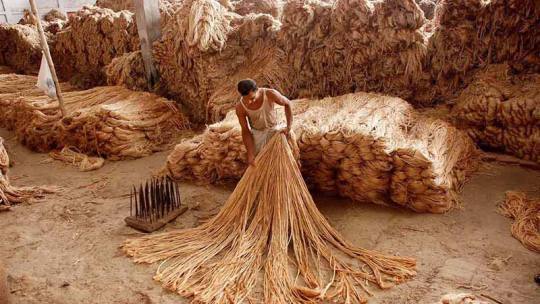
Raghav Gupta, who is the chief of the Indian Jute Mills Association, said, "The year had good and bad things, but we are still looking forward positively."
Kisan App
"In the beginning, there was a lot of supply. But between September and November, demand was weak. This led to a 20-25% decrease in plant capacity and low demand for raw jute. However, a government push beginning in mid-December improved how much businesses wanted and sold." He said this.
Krishi App
An expert in jute and a former chairman of IJMA said, "Support from the center was important."
Gupta said, "By carefully watching and making sure things are okay, the situation became better." He hopes that the use of capacity will get better in the new year because government offices are expected to start ordering more jute packaging.
Government actions gave the needed help. Rules for using Jute in 2023-24 say we need to use all the food grains and 20% of sugar in bags made from jute. This increases belief in this area. The Minimum Support Price (MSP) for raw jute was increased by Rs 300 per quintal. This helped both mills and farmers - around 4 lakh workers and 40 lakh farm families in the country.
Because a lot of jute was harvested, the price for raw jute dropped below MSP. But the Jute Corporation of India (JCI) made more efforts to buy jute. By October 29, they got 8.43 lakh units of jute and it was valued at Rs 393 crore. This was 100% more than what they got in 2022.
"We have 110 Department Stores and 25 Outside Agencies buying things for the MSP. We also added 70 extra places to store things in West Bengal, Assam, Bihar, Odisha, Andhra Pradesh and Tripura. This makes sure that the buying goes smoothly," said the general manager of JCI, K Mazum
To keep helping farmers, the person in charge of jute made it so they have to buy at least the minimum buying price until January. This is because by then, hopefully the market will recover because the mills need more things. The government still buys a lot, about Rs 9,000 crores worth of bags made of jute for packaging food.
There are still some problems, but it looks like the jute industry is getting ready to bounce back in the next part of the jute year. This is helped by the government's backing and a better view boosted by fresh demand, people who care about this said.
0 notes
Text
The government strictly has no plans to impose MEP on agricultural products
On Friday, the government said it does not plan to implement a minimum export price (MEP) for all farm products. Commerce department in-charge Rajesh Aggarwal said the government is not planning to test all farm products for export.

"I just want to say that the government does not plan to put MEP on all farm products or look at all farm products from the export point of view. There is no such decision. The government is definitely not planning to do that," he told reporters here.
Kisan App
A group of ministers, who tested MEPs on onions, recently opted for basmati rice.
Krishi App
He said that the group getting greater powers does not mean that "the group will examine every farm product and recommend an MEP for it".
He said even though they stopped selling non-basmati white rice, India still sent 1.3 lakh tonnes of rice to more than 14 countries for their food problems.
#agriculture#agriculturenews#farmer#farminglife#india#agriculturenewsnetwork#agriculturenewstoday#farmingnews#rice
0 notes